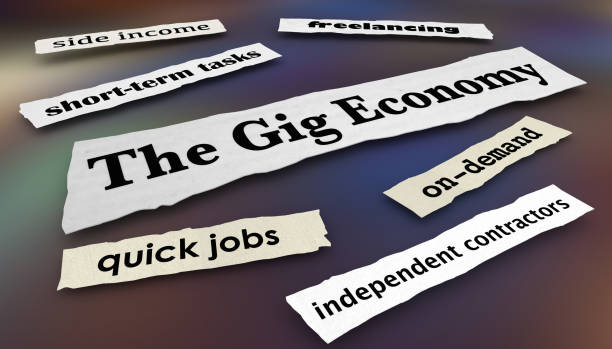The Side Hustle Wave: Why More Americans Are Turning to Gig Work
Despite its reputation as a trend, the gig economy isn’t a passing fad—it’s becoming a permanent fixture for millions of Americans. According to a recent Bankrate survey cited by USA Today, 36% of U.S. adults now maintain a side hustle—earning income beyond their main job. What’s more, they’re making more than ever: the average side hustler now brings in $891 per month, up from $810 last year.
But behind these numbers lies a deeper shift in how people think about work, income, and security.
Key Insights at a Glance
- Sustaining for the long run
Roughly 32% of respondents believe they’ll always need a side job just to make ends meet. - Fun, not just funds
Despite the financial pressure, 50% say they engage in side gigs for enjoyment, not just to boost income. - Growing earnings
Compared with prior years, side hustlers are earning more—underscoring how businesses, platforms, and demand continue to adapt.
Why the Surge? What’s Driving Side Hustles
- Rising costs, stagnant wages
With inflation, housing prices, and daily expenses climbing, many workers don’t feel safe relying on a single paycheck. - More flexible platforms
Technology (apps, marketplaces, networks) makes it easier than ever to turn a skill, hobby, or spare time into earning potential. - Desire for autonomy & passion projects
Many side hustles aren’t just about income. Whether it’s coaching, crafting, writing, or consulting—people are doing what they love. - Economic uncertainty
In times of layoffs, industry disruption, or economic headwinds, a side gig provides a buffer or fallback.
What It Means for Businesses & Communities
- Opportunity for collaboration
Local businesses, co-working spaces, or municipalities can harness side hustlers as micro-partners, contractors, or contributors. - Need for tailored support
Skill training, tax education, legal advice, and capital access are all under-served among side hustlers. - Changing workforce dynamics
Employers increasingly need to reckon with nontraditional work structures and hybrid income models for their talent pools.
Tips for Side Hustlers: Making It Sustainable
- Keep good financial records
Track income, expenses, and taxes separately to avoid surprises. - Prioritize time & energy
Don’t burn out. Choose side gigs with flexibility or modular commitments. - Leverage platforms wisely
Use marketplaces or gig networks to reduce marketing or client acquisition overhead. - Build for growth
Even small side hustles can evolve into full businesses—plan for scaling, systems, and diversification. - Stay compliant
Understand local business licensing, insurance, and tax obligations in your area of operation.
Final Thoughts
The side hustle phenomenon is no longer niche—it reflects a broader transformation in how people engage with work, income, and purpose. For many, it’s not just about earning more; it’s about reclaiming agency, experimenting with passion paths, and blending multiple income streams for financial resilience.
If you’re currently in a side hustle (or thinking about starting one), this is your moment. The infrastructure is improving, the tools are accessible, and the mindset is shifting. Lean in, adapt, and let your hustle tell your story.
Information gathered from USA Today


Recent Comments